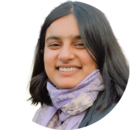Empowering women through digital innovations

Women’s Self-Help Groups (SHGs) are an important and effective tool to promote women’s empowerment, social mobilisation, and financial inclusion in rural India. More recently, an increasingly large number of digital tools have been emerging, holding the promise of accelerating women’s empowerment, enhancing the efficacy of existing initiatives, providing avenues to improve knowledge, and creating new opportunities for women to connect and share information.
Initiative to What Works to Advance Women and Girls in the Economy (IWWAGE) is exploring whether and to what extent digital innovations can be used to support SHGs and their federations to connect with each other, layer and bundle services, and promote women’s social and economic empowerment.
In Chhattisgarh, IWWAGE is working with the State Rural Livelihood Mission, Bihan, to promote the implementation of digital innovations for women’s empowerment in the state, understand their effectiveness, and identify potential opportunities for improvement. Specifically, IWWAGE is supporting three distinct, but interrelated initiatives, which complement and reinforce each other.
The first one of them is Haqdarshak, a mobile application or tech-based platform that provides a ready reference of more than two hundred central and state government welfare schemes and programs, the benefits promised, related eligibility criteria including the documents required, and the application process. The app can be used by the SHG women to make door-to-door visits to help citizens discover and apply for schemes in return of a small fee. With this project, IWWAGE aims at training five thousand women (Haqdarshikas) across four districts in Chhattisgarh on the app usage, who can then enroll citizens in schemes. The objective of this initiative is two-fold: first, to increase the social and economic empowerment of SHG members who can take up work as Haqdarshikas, and second, to promote the uptake of government entitlements for the last mile. This intervention can present some important learning opportunities, which IWWAGE is capturing through a rigorous impact and process evaluation. Results from this evaluation will help shed light on the effectiveness of technology-enhanced agent-based models to promote the uptake of government schemes in rural areas, the sustainability of such models to generate livelihood opportunities, and their cost-effectiveness.
A critical success factor for the Haqdarshak model is that technology, when paired with the extensive field presence of SHGs, creates synergies that support the effective dissemination of information and awareness of government schemes and entitlements. This applies not only to the Haqdarshak model, but to other development interventions based on digital solutions. To unpack how information may be shared more effectively using the digital medium, IWWAGE is funding a study to understand information flows within SHGs and the role of technology for furthering such flows. IWWAGE is supporting a group of researchers from Evidence for Policy Design (EPoD) to map how information flows among SHG members offline, during SHG meetings, and online, for example through social media interactions. Comparing offline and online interactions in the same group will throw light on the transformative role that technology can play in shaping interactions among women living in rural areas.
Preliminary scoping exercises for the two studies outlined above, indicate that while significant progress has been made on digital literacy, many rural women still struggle to use smartphones effectively. Time and time again practice and experience have proven to be the best way to learn. This is why IWWAGE is supporting a study, which is also being conducted by EPoD, to understand whether encouraging women to use smartphones through a digital use case will have an impact on digital literacy and the use of smartphones by women. The tool being employed for this purpose is Mor Awaaz, a service that communicates information to women about good health practices and government services via “push” and pull phone calls. Through the evaluation of this instrument, the study will also aim to understand the impact of women’s engagement with phones on the shape of their networks and their participation in collectives.
While there is reason to be optimistic about the potential of these solutions, there remain obstacles and challenges to ensure that the benefits from these tools are truly inclusive and sustainable. Besides obvious technical issues, such as the reach and reliability of phone networks, the penetration of mobile phones remains a concern. In rural areas, women often share smartphones with other family members, which might reduce the impact of interventions relying on technology. More importantly, as smartphone ownership and access are more concentrated among women who already have a higher social and economic status in their communities, these interventions might end up empowering the already, relatively, empowered, potentially widening inequalities and failing to be truly inclusive. While being cognizant of these risks, one might hypothesize that benefits will spillover from the digital enabled women to other women in their social network. Over time and with smartphones becoming more and more prevalent, technology enabled solutions will fulfill their promise of democratising access to information and opportunities. IWWAGE is fully committed to work with its public, private, and civil society partners to build evidence to answer this question, which is of outmost importance to understand the real impact that technology can bring to increase the social and economic empowerment of women in India and beyond.
Fabrizio Valenti works as Head, Financial Inclusion, LEAD at Krea University. This piece draws from the ongoing work at IWWAGE to explore the transformative potential of digital solutions for women’s empowerment collectives in Chhattisgarh.
- Posted In:
- Latest Blogs






















































Leave a Reply